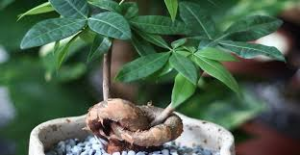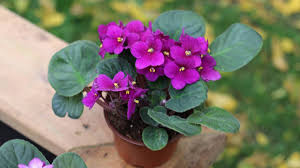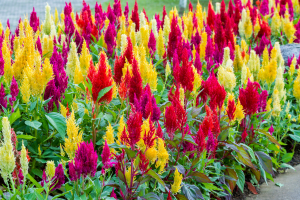How To Plant African Violets
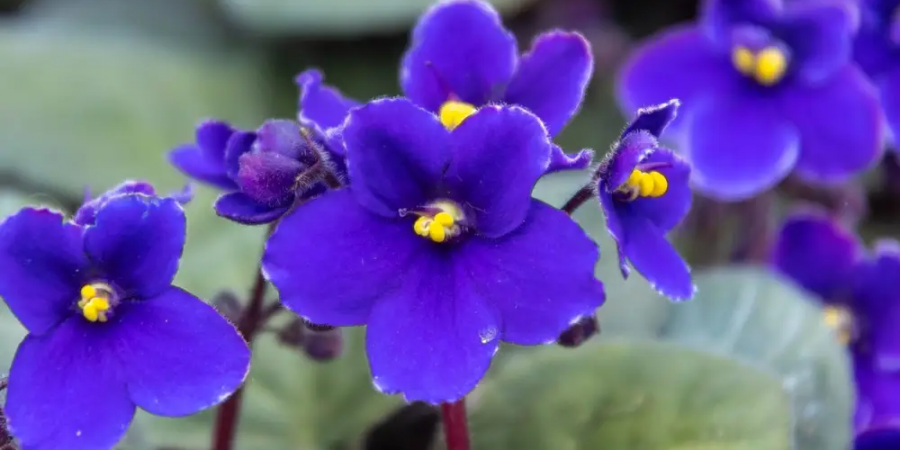
Photo:insider
African violets, known for their vibrant and colorful blooms, are a popular choice among houseplant enthusiasts. They are relatively easy to grow and care for, making them perfect for beginners and experienced gardeners alike. These charming plants add a splash of color to any indoor setting and are known for their ability to thrive in a variety of home environments.
Table of Contents
What is African Violet?
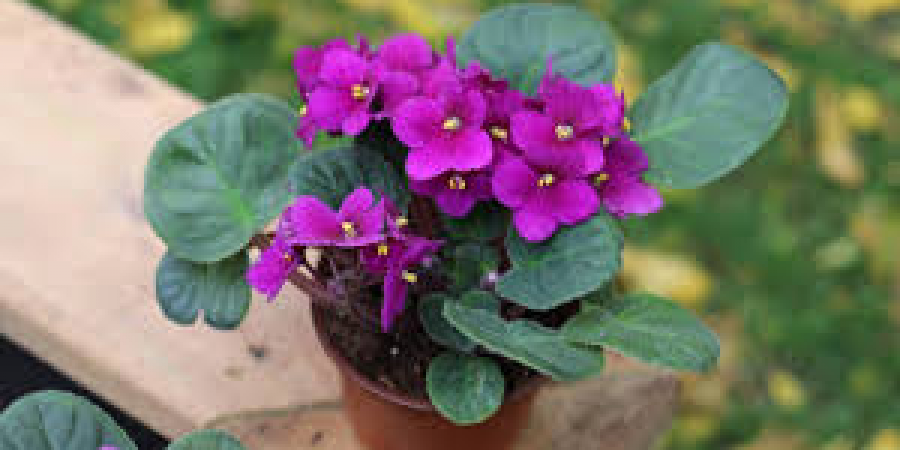
The African violet (Saintpaulia) is a compact, low-growing plant characterized by its soft, fuzzy leaves and stunning, velvety flowers that come in shades of purple, blue, pink, and white. Originating from Tanzania and Kenya, African violets are small in size, typically growing up to 6 inches in height and width. They are known for their relatively fast growth rate and can live for many years with proper care. The African violet is a perennial plant, meaning it can live and bloom for several years under the right conditions.
Common Name | African Violet |
|---|---|
Botanical Name | Saintpaulia spp. |
Family | Gesneriaceae |
Plant Type | Perennial, Houseplant |
Mature Size | Up to 6 inches in height and width |
Sun Exposure | Indirect, moderate light |
Soil Type | Well-draining |
Soil pH | pH 6.0 to 6.5 |
Flower Color | Purple, blue, pink, white |
Hardiness Zones | Typically grown indoors |
Native Area | Tanzania and Kenya |
Toxicity | Generally non-toxic to humans and pets |
Growing Conditions for African Violet
Light for African Violet
African violets prefer bright, indirect light. They thrive in conditions where they receive filtered sunlight, as direct sunlight can scorch their leaves. A north- or east-facing window is ideal. During shorter winter days, supplementing with a grow light can be beneficial to maintain their vibrant blooms. In contrast, during very bright summer days, it may be necessary to provide some shade to protect them from intense light.
Soil for African Violet
The ideal soil mix for African violets should be light and well-draining to prevent root rot. A common recipe is to combine equal parts of peat moss, vermiculite, and perlite. This mix ensures good aeration and moisture retention while allowing excess water to drain away easily. The proportions can be adjusted slightly, but maintaining a balance is key for the health of the plant.
Temperature and Humidity for African Violet
African violets flourish in moderate temperatures and humidity levels. The ideal temperature range for these plants is between 65°F and 75°F (18°C to 24°C). They can tolerate temperatures as low as 60°F (15°C) but require protection from cold drafts. High humidity is preferable, around 60-80%, but they can adapt to average household humidity levels. During dry winter months, a humidifier or a pebble tray filled with water placed near the plant can help increase humidity. Avoid sudden temperature changes and direct airflow from heaters or air conditioners, as this can damage the plant.
General Care of African Violet
Watering of African Violet
Watering is a critical aspect of caring for African violets. They prefer their soil to be consistently moist but not waterlogged. The best approach is to water them from the bottom, allowing the plant to absorb moisture through the drainage holes. This method helps to avoid getting water on the leaves, which can cause spots and damage. Water them when the top inch of the soil feels dry to the touch. Using room temperature water is ideal to avoid shocking the plant.
Fertilizing of African Violet
African violets benefit from regular fertilization to promote healthy growth and blooming. Use a balanced, water-soluble fertilizer formulated for African violets, typically with a higher phosphorus content to encourage blooming. Fertilize every 4 to 6 weeks, especially during the growing season (spring and summer). It’s important to follow the recommended dosage on the fertilizer package to avoid over-fertilization, which can harm the plant.
Repotting of African Violet
African violets should be repotted once every year or two, or when they outgrow their current pot. This helps to refresh the soil and provide more room for root growth. Choose a pot that is one size larger than the current one and has good drainage. When repotting, gently tease out the roots and place the plant in fresh African violet potting mix. Ensure the plant is at the same soil level as before to avoid burying the stem too deeply.
Pruning of African Violet
Pruning is important to maintain the shape and health of African violets. Remove any dead or dying leaves and flowers regularly to encourage new growth and prevent potential pest or disease problems. Also, remove any suckers (small offshoots) that appear around the base of the plant to ensure that the main plant remains the focus of energy and nutrients. Pruning is best done with clean, sharp scissors or pruning shears to avoid damaging the plant.
How to propagate African Violets?
Propagating African Violets is a straightforward and enjoyable process. Here’s a step-by-step guide to do it:
Leaf Cutting Method:
- Choose a Healthy Leaf: Select a healthy and mature leaf from the African Violet plant. It’s better to choose a leaf that is not too old or too young.
- Cut the Leaf Stem: Use a sharp knife or scissors to cut the leaf stem at a 45-degree angle. The stem should be about 1 to 2 inches long.
- Prepare the Potting Mix: Fill a small pot or container with a suitable potting mix. African Violets prefer a light, porous soil mix with good drainage. You can also use a mixture specifically designed for African Violets.
- Plant the Leaf Cutting: Insert the cut end of the leaf stem into the potting mix. Make sure it’s deep enough to support the leaf, but don’t bury the leaf itself.
- Water and Cover: Water the soil lightly to settle it around the stem. You can cover the pot with a plastic bag or place it in a humid environment to maintain moisture and encourage rooting.
- Wait for Root Development: Keep the soil moist but not soggy. Place the pot in a warm area with bright, indirect light. Roots usually develop within a few weeks to a couple of months.
- Transplanting New Shoots: Once the new shoots develop and have their own leaves, you can gently separate them from the mother leaf and transplant them into individual pots.
Crown Division:
- This method involves dividing the crown of a mature plant into several sections, each with roots attached. It’s a bit more advanced and requires careful handling to avoid damaging the plant.
Sowing Seed:
- African Violets can also be propagated from seeds, but this method is less common and can be more challenging for beginners.
Caring for New Plants:
- Once your propagated plants are established, care for them as you would a mature African Violet. This includes providing sufficient light, moderate watering, and regular feeding with a balanced fertilizer.
Commons Problem with African Violets
African Violets are popular houseplants known for their beautiful blooms and lush foliage, but like any plant, they can encounter several common problems. Here’s a list of some typical issues and how to address them:
- Lack of Blooming:
- Cause: Insufficient light, improper watering, or lack of fertilizer.
- Solution: Ensure the plant receives bright, indirect light, regular watering, and periodic fertilization with a balanced African Violet food.
- Yellowing Leaves:
- Cause: Overwatering, poor drainage, or nutrient deficiencies.
- Solution: Adjust watering schedule, ensure the pot has good drainage, and provide a balanced fertilizer.
- Wilting Plant:
- Cause: Underwatering, root rot due to overwatering, or extreme temperatures.
- Solution: Establish a consistent watering routine and maintain a comfortable room temperature. Check for root rot and repot if necessary.
- Leaf Spot:
- Cause: Fungal infections or water spots from cold water touching the leaves.
- Solution: Avoid getting water on the leaves and treat with a fungicide if necessary.
- Curling Leaves:
- Cause: Pest infestation, such as aphids or mealybugs, or environmental stress.
- Solution: Inspect for pests and treat with insecticidal soap or neem oil. Adjust environmental conditions.
- Powdery Mildew:
- Cause: Fungal infection often due to high humidity and poor air circulation.
- Solution: Reduce humidity, improve air circulation, and treat with an appropriate fungicide.
- Root Rot:
- Cause: Overwatering or poor drainage.
- Solution: Improve drainage, repot into fresh soil, and be cautious with watering.
Conclusion
In conclusion, successful cultivation of African Violets requires attention to their specific needs such as adequate indirect light, consistent moisture without overwatering, and appropriate fertilization. These plants thrive best when kept in a stable environment with moderate temperatures. I recommend starting your African Violet journey in spring, as the longer daylight hours and stable temperatures offer an ideal growth environment. Additionally, African Violets can be companion planted with other humidity-loving houseplants like ferns or spider plants, which share similar care requirements and can create a visually appealing and harmonious indoor garden.
People Also Ask
African violets are easy to grow if you play by their rules. The key to keeping them happy is giving them the conditions they’d get in their native jungle: humidity, damp soil and lots of bright, filtered light.
African violets prefer to receive 6-8 hours of indirect sunlight per day. They don’t like sun (particularly hot afternoon sun) directly hitting their leaves, so choose a spot with filtered morning sun only or a lot of in-direct bright light.
African violets prefer to stay evenly moist – ideally the soil feels like a well wrung-out sponge. They do not like to dry out completely in between waterings, but they do not like to be sopping wet all the time. Too much water can lead to root rot, while roots start to die in soil that is too dry much of the time.

